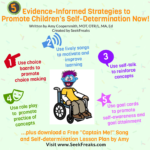
Amy worked as an OT Supervisor, clinician and evaluator for the NYC Department of Education for 17 years. She is also a prolific lyricist, writing songs about Children’s Self-Determination and Mental Health, 2 of her passions! Catch Amy’s evidence-informed courses at https://webinars.applyebp.com/
What you will learn from this article…
- Amy’s journey from promoting self-teaching as a Teacher, to promoting self-determination as an OT
- Top 5 Strategies you can do now!
- Free song and lesson plan to use for goal setting, with Amy and her puppet, Cappy
I Promoted Self-Teaching as a Health and PE Teacher
For the past twenty-five years, I’ve been infusing self-determination into my sessions with children, at times without even realizing it! It started as a teacher at a private school in 1995, where I began teaching health and physical education. The school administration gave me wide latitude to develop a middle school health curriculum that would teach children to stand up for their own health and well-being.
My graduate school program had introduced me to the spectrum of teaching styles promoted by Muska Mosston, a highly regarded researcher who advocated self-teaching. I decided to put those concepts into practice as a teacher. For eight years, I provided opportunities for children to interact with family members, teachers, friends, political representatives, local journalists, and community business owners, as children self-taught the lessons at hand.
The kids had the chance to meet Vice President Al Gore at an anti-tobacco event, see their names and quotes in newspapers, watch as their artwork was hung at a local restaurant, and receive awards and certificates for the lessons that they taught themselves.
Every child appeared individually in a short video in which they stated their personal health goal aloud. The video played on a loop in the school lobby during Parent Teacher conferences. Topics they self-taught included decision-making, problem-solving, and positive health choices. It gave me great joy to see a child stand up and state their own personal health goal.

because I want to be a healthy mom and
grandma someday, without cancer
or breathing problems.”
One of the greatest successes was a 14 -year-old girl who saved her nephew’s life because she had learned –and taught her classmates — CPR during our health classes. Children really took charge of their learning. All students had the opportunity to self-teach, and thereby prove to themselves that they were capable of achieving their goals.
…and Then I Promoted Self-Determination as an OT
When I started working as a school based occupational therapist in 2003, I brought these experiences with me and incorporated self-determination concepts into my sessions. Research informed me that children with disabilities who take charge of their learning and set their own goals demonstrate greater success in school and career than those who do not learn self-determination concepts.
Over the years, I did further research and saw firsthand the power of self-determination for children with disabilities. Music, self-talk, role-playing, choice making and self-monitoring concepts all became part of the occupational therapy sessions I provided with children. They quickly learned that they were in the driver’s seat. After all, it’s their life – not mine.
The decisions they make are more important than any one skill they might achieve. I believed then, and to this day – that if a child learns a skill but cannot figure out how to use that skill due to obstacles they face – what good is that skill?
Top 5 Evidence-informed Self-Determination Strategies You Can Do Today
I’m sharing some of the most meaningful self-determination approaches I’ve discovered during the past 25 years. Practitioners have written me, sharing the ways these approaches completely transformed their practice. Their children exhibited a more positive outlook and made faster progress! I hope these ideas resonate with you.
1. Use Choice Boards to Promote Choice Making
It’s really easy to use Choice Boards in your sessions with children. When preparing to work on an activity, ask the child to make a choice about one aspect of that task.
Then, create a simple Choice Board with the child illustrating their choices using magazine pictures, internet photos, clip art or hand drawn illustrations. They can then pick the choice that they desire to start working on their task.
Although this may seem like a big investment of time, it’s a worthwhile investment! The child truly “owns” their choice and buys in to the activity when they have made the choice. Instead of an adult telling them what to do, the child decides for themselves what will help them in that moment.
Choice-making empowers children to take charge of their life and their learning!
Below is a sample choice board created by a child, using pictures from the internet:

2. Use Lively Songs to Motivate and Improve Learning
A 2016 study at the University of Southern California’s Brain and Creativity Institute found that musical experiences in childhood can actually accelerate brain development. Singing has been shown to improve learning outcomes and memory for a wide range of ages and abilities.
Additionally, rhythmic activities have been shown to enhance learning and attention in children. There are numerous ways to incorporate music into sessions. These include:
- Using YouTube, children’s CDs/DVDs or GoNoodle, you can teach child engaging songs featuring concepts or content that they need to learn.
- Ask child to listen and repeatedly sing a song that they enjoy, over time, to reinforce important concepts.
- Utilize music videos or audio recordings that encourage the child to sing along during sessions.
- Have child use a simple instrument while they sing, such as a tambourine or maracas, to embed rhythm into session.
- If child can write, ask them to write the lyrics of the song, to incorporate multiple modalities. Analyze the lyrics together so that child understands the song’s meaning when they are singing.
- Ask child to tell you where and when it will be most helpful for them to sing a song to help them achieve a particular goal. Make singing the song part of their schedule.
3. Use Self-Talk to Reinforce Concepts
Self-talk is a proven strategy for a child to turn a concept into action. As a mental strategy using self-addressed cues (short phrases or a few words), self-talk can trigger appropriate responses by focusing attention on the skill or behavior, thereby improving performance.
Positive self-talk can help children build self-esteem and confidence. When children learn to give themselves a positive message, they may be more likely to keep trying even when things don’t work out the way they planned the first time — or to try new things that they feel nervous about.
Research indicates that self-talk improves performance. Here are a few ways to incorporate self-talk into your sessions:
- As child is performing a task, ask them to say everything they are doing aloud. This helps them become used to the idea of self-talk and reinforces learning.
- Have child state aloud their goal and their reason for wanting to achieve that goal.
- Ask child to state some of the good things that will happen if they work toward a goal.
- Ask child to explain the steps they will take to achieve something they want.
- If child says something negative, ask them to think of a way to state the thought in a positive manner. For example, if a child says, “That’s too hard, I can’t do it,” ask them to state it in a positive way. E.g. “It’s very hard, and I can’t do it yet. But I will keep trying.”
- If child has trouble with self-talk, model the behavior by stating something positive that you – the practitioner – want to do. For example, you can tell the child, “I had a really hard time learning a song on the piano. Instead of saying, ‘It’s too hard, I can’t do it,’ here’s what I say: ‘It’s so hard to play this song, so I’ll keep practicing a little bit at a time.’”
4. Use Role Play to Promote Practice of Concepts
Role play enables children to try out different ways of communicating in a safe space. It gives them a chance to develop social and emotional skills like taking turns, playing cooperatively and expressing appropriate emotions.
Role play can also have an important part in improving language and listening, creative thinking and problem solving. Here’s how to do this in your sessions:
- Use puppets. Practitioner and child can each use a puppet. Or if there is a group session, two or more children can use puppets. Ask children to explain a situation that is difficult for them (e.g. lunchroom, gym, math class). They can tell you about something that may have been hard for them (e.g. losing a game they played with a classmate). Assign each puppet a role and act out a skit together. When done, switch roles. This gives children a chance to experience both people’s perspectives.
- Another option is for practitioner to “pre-load” a box with various problems written on index cards. Child can pick a card out of the box and the puppet role play can begin. If preferred, role play can be done without puppets.
- For example: Child and waiter at a restaurant. Child must order food and waiter doesn’t understand what they want to order. After role play, be sure to ask children what they think they did well, and what could be done better next time. After skit is done, the person playing the child becomes the waiter and vice versa.
5. Use Goal Cards to Promote Self-Awareness and Goal Attainment
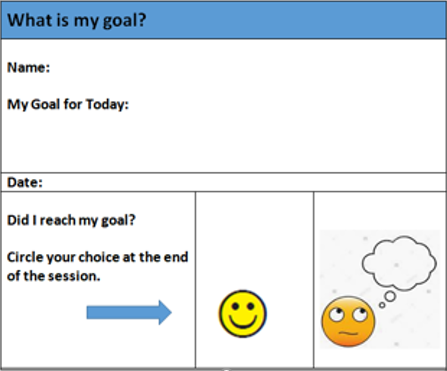
Goal cards are simple way to promote self-monitoring for your client. Research has identified several ways that self-monitoring affects children, including improved behavior, increased on task behavior, more positive social interactions, improved academic performance and increased self-awareness. Additionally, when self-monitoring strategies are implemented, evidence shows a decrease in children’s off task behavior, disruptions, negative social interactions and time spent completing assignments.
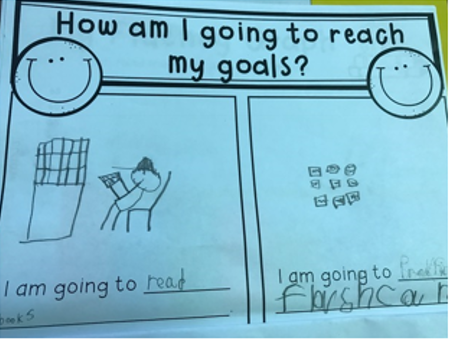
Goal cards are best implemented by the child. They create their own goal card and collaborate with practitioner to make a system that works best for them. It’s a win-win situation because children learn about themselves and become excited to work on their goals, while the practitioner benefits from an organized system of progress monitoring.
The More (Strategies), the Merrier: Free “Captain Me” Song and Lesson Plan
You can also up the ante by combining these strategies. I have been doing just that! I created simple catchy tunes which I combined with my puppet, Cappy, and accompanying stories with lots of self-talk and opportunities to make choices.
To get you started, I’d love to share with you: Captain Me! An Interactive Self-Determination Musical Curriculum for Children with Diverse Abilities. It is a perfect accompaniment to teach your pediatric clients how to come up with their own goals (for #5 above, their Goal Cards).
Download the following for free:
- Song as an Audio File: “My Goal” Lyrics and Music by Amy Coopersmith, Song Performed by David Lamm
- Lesson Plan for “My Goal”
I hope this will be helpful in teaching your children to come up with a goal that is their own.
Happy Singing!
(And apologies in advance, if you can’t get the song out of your head. On a good note, your kids won’t forget them either.)
Join the author, Amy Coopersmith, and her songs and lesson plans in her webinars at www.ApplyEBP.com
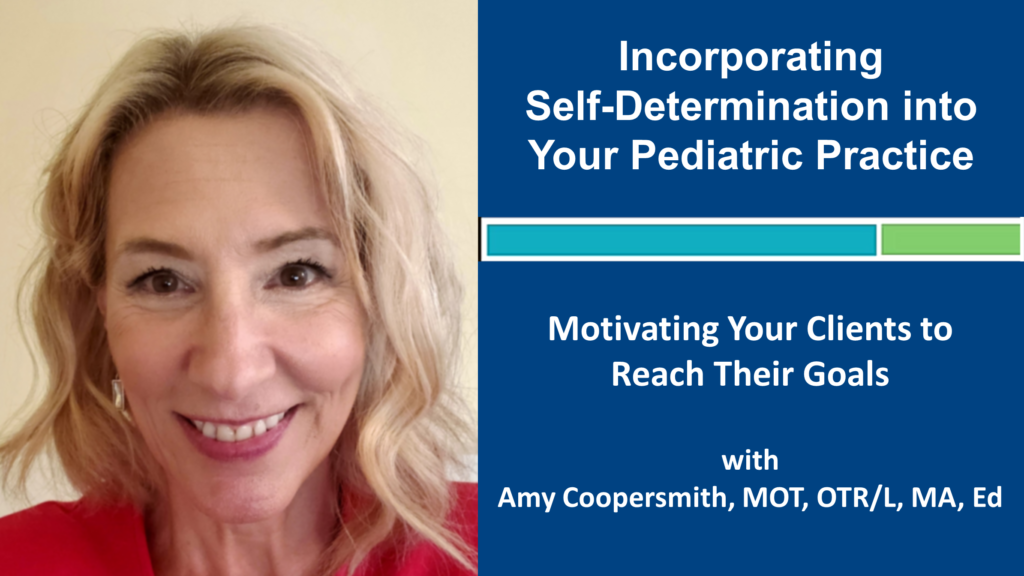
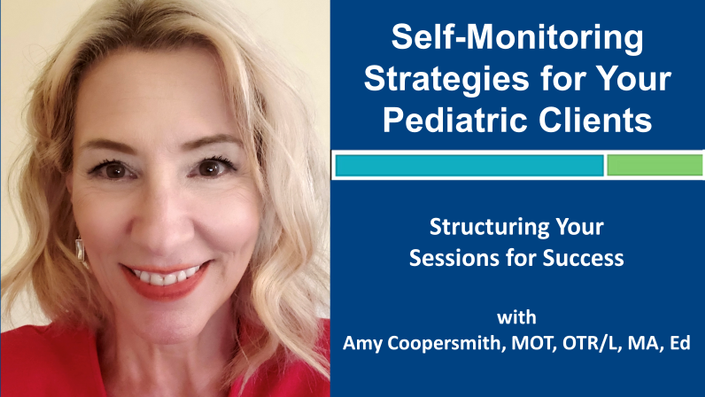
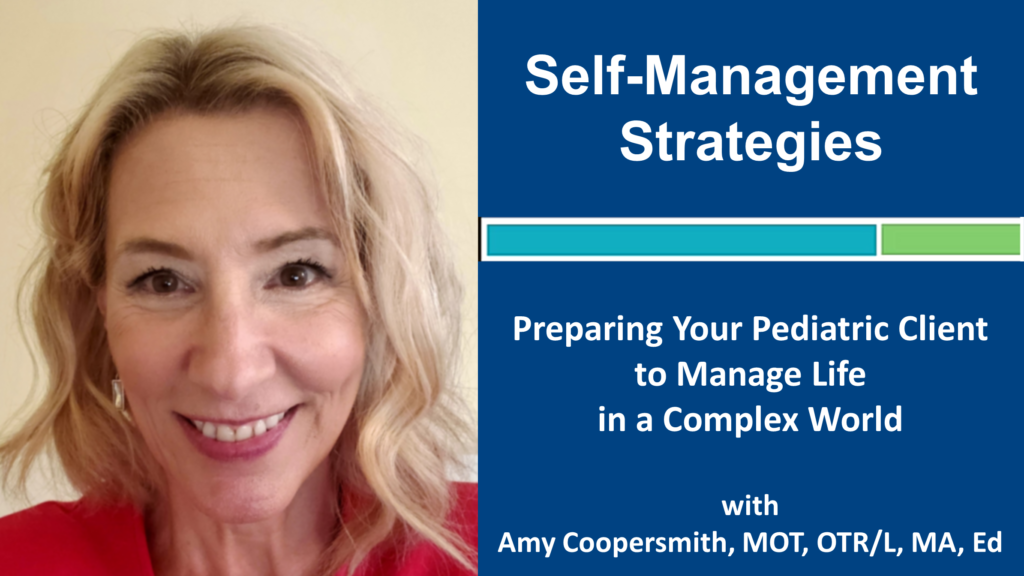
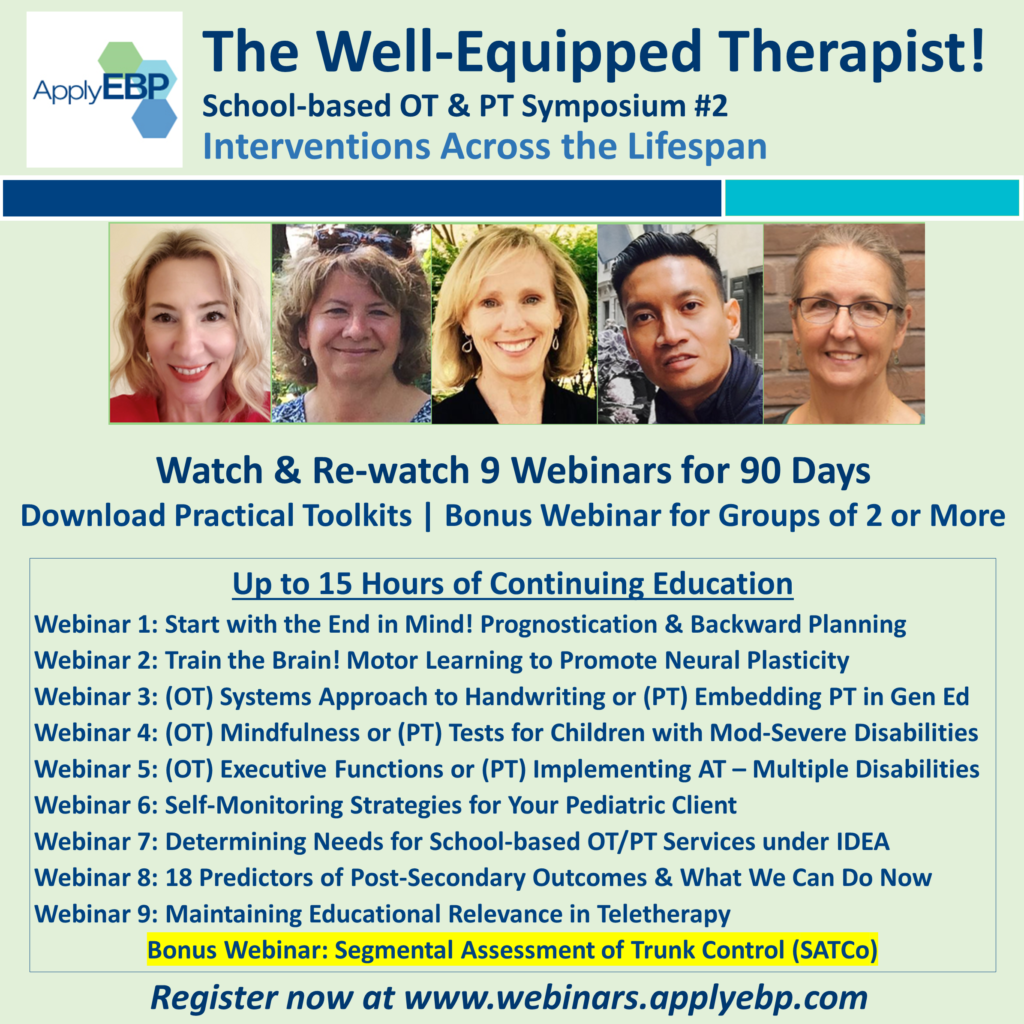
References
Burke, K. M., Raley, S. K., Shogren, K. A., Hagiwara, M., Mumbardó-Adam, C., Uyanik, H., & Behrens, S. (2020). A Meta-Analysis of Interventions to Promote Self-Determination for Students with Disabilities. Remedial and Special Education, 41(3), 176–188. https://doi.org/10.1177/0741932518802274
Chou, Y.-C., Wehmeyer, M. L., Palmer, S. B., & Lee, J. (2017). Comparisons of Self-Determination Among Students with Autism, Intellectual Disability, and Learning Disabilities: A Multivariate Analysis. Focus on Autism and Other Developmental Disabilities, 32(2), 124–132. https://doi.org/10.1177/1088357615625059
Davis, J.L., Mason, B.A., & Davis, H.S. (2016). Self-Monitoring Interventions for Students with ASD: a Meta-analysis of School-Based Research. Rev J Autism Dev Disord, 3, 196–208. https://doi.org/10.1007/s40489-016-0076-y
Deci, E. L., & Ryan, R. M. (1985). Intrinsic motivation and self-determination in human behavior. New York, NY: Plenum.
Governor, D., Hall, J & Jackson, D. (2013). Teaching and Learning Science Through Song: Exploring the experiences of students and teachers. International Journal of Science Education, 35 (18) 3117-3140. https://doi.org/10.1080/09500693.2012.690542
Habibi, A., Cahn, BR., Damasio, A., Damasio, H. (2016). Neural Correlates of Accelerated Auditory Processing in Children Engaged in Music Training. Developmental Cognitive Neuroscience, 21, 1-14. https://doi.org/10.1016/j.dcn.2016.04.003
Marzano, R.J. (2010). When students track their progress. The Art and Science of Teaching, 67(4), 86-87.
Meichenbaum, D., & Biemiller, A. (1998). Nurturing Independent Learners: Helping Students Take Charge of Their Learning. Cambridge, MA: Brookline Books.
Mosston, M., & Ashworth, S. (1990). The Spectrum of Teaching Styles. From command to discovery. White Plains, NY: Longman. (United States).
Rafferty, L. A. (2010). Step-by-step: Teaching students to self-monitor. Teaching Exceptional Children, 43(2), 50-58. https://doi.org/10.1177/004005991004300205
Shogren, K. A., Wehmeyer, M. L., Palmer, S. B., Rifenbark, G. G., & Little, T. D. (2015). Relationships between self-determination and postschool outcomes for youth with disabilities. The Journal of Special Education, 48(4), 256–267. https://doi.org/10.1177/0022466913489733
Vanderbilt University (2013). Promoting Self-Determination Among Students with Disabilities. Retrieved from https://vkc.mc.vanderbilt.edu/assets/files/resources/psiSelfdetermination.pdf
Wehmeyer, M.L. & Field, S.L. (2007) Self-Determination Instructional and Assessment Strategies. Thousand Oaks, CA: Corwin Press.
Wehmeyer, M. L., Shogren, K. A., Little, T. D., & Lopez, S. J. (2017). Development of self-determination through the life-course. Netherlands: Springer. https://doi.org/10.1007/978-94-024-1042-6_6
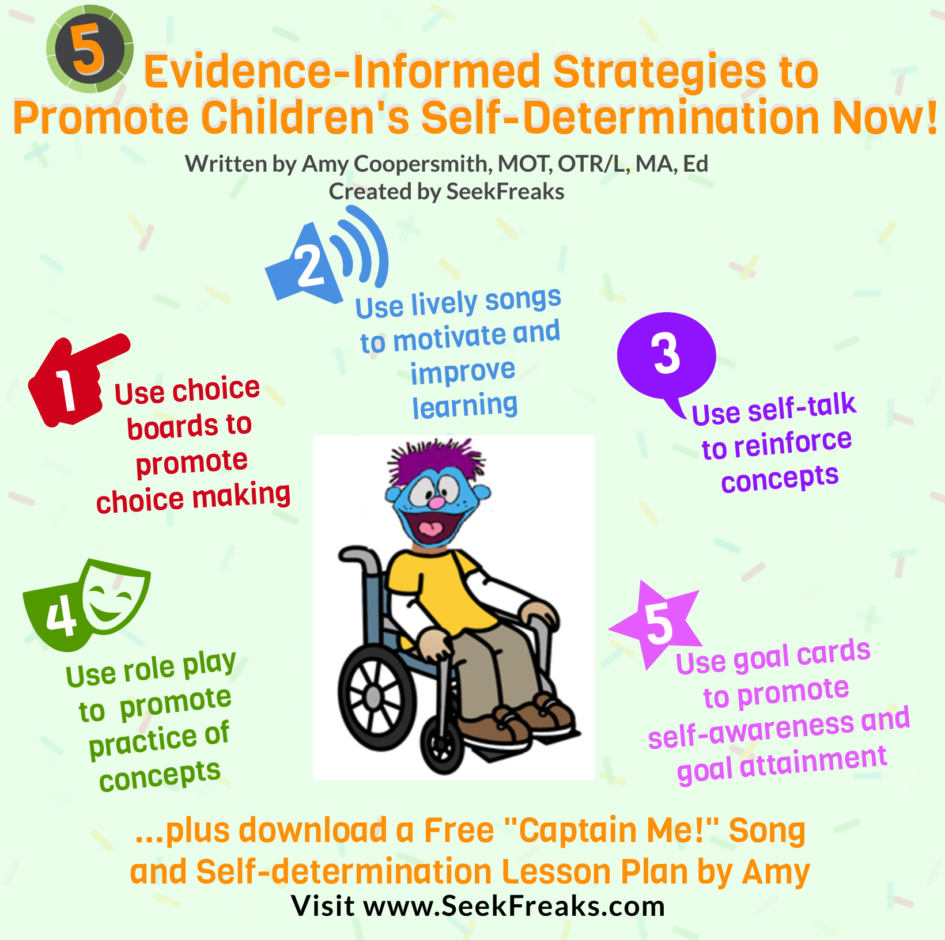
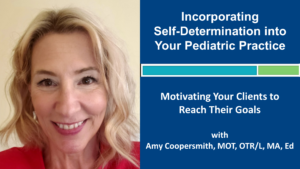
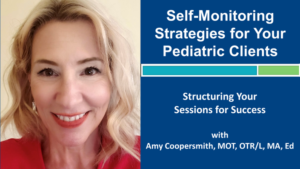
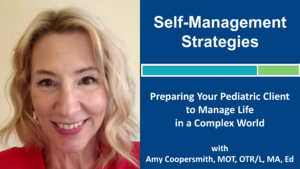










November 6, 2023 at 10:00 pm
u21hma